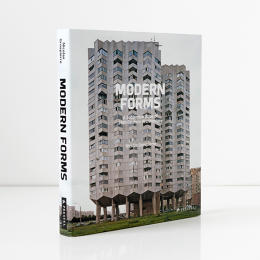Good architecture and so-so buildings can bear some of the same traits.
For example, the Heydar Aliyev Center, completed in 2012 by Zaha Hadid (RIP), and The Sanctuary of the Divine Mercy, completed in 1993 by Jerzy Kuzmienko and Andrzej Fajans, have similar swooping parabolic silhouettes but the former is elegant while the latter is brusque and hulking at best.

The sometimes-subtle distinction between the celebrated and the banal intrigues the Swiss-born photographer Nicolas Grospierre. For over a decade, he's traveled the world documenting modern structures—those constructed between 1920 and 1989—as a visual record of the failures and successes, and the humble and iconic designs of the era. He has compiled 200 photographs in a new book called Modern Forms: A Subjective Atlas of 20th-Century Architecture (Prestel, 2015).
Many of the structures are austere, abandoned, and overgrown, or lack the finesse of the more iconic buildings sprinkled between, like the Eames House and St. Louis Arch. You could interpret the series as a somber look at failed buildings, but Grospierre sees them all as emblems of a certain way of thinking and holds them in high regard. In the book's introduction he states:
For me, modernism, and architectural modernism in particular, is the embodiment of one of the greatest ideas in the history of mankind—progress. Alas, the idea failed, but this failure has taken on a certain nobility characteristic of fallen ideals. This moves me considerably on the aesthetic and the ideological level. My works can be received as a form of critique of modernism, but I must emphasize this is not a critique that comes as a result of reluctance. It is, rather, a contestation, an attempt to demonstrate what had gone wrong. For I can identify with ideas of progress. I believe in them and I long for them.
Modernism was intended as a vehicle to promote social good and guarantee good design for the masses. To that end, Grospierre focuses on structures like churches, bus stops, sports centers, and mass housing projects. Many of them were built under Communist regimes. While modernism's lofty social and ideological mission never fulfilled expectations, its formal exercises continued to evolve over the decades. Grospierre's photographs show how architects in less-covered places like the Crimean peninsula, Baltic countries, and Middle East explored crazy shapes and silhouettes in hopes of tapping into the idealized vision of progress through design. Spy a few of the images in the slide show above.
All Photos: Nicolas Grospierre courtesy Prestel